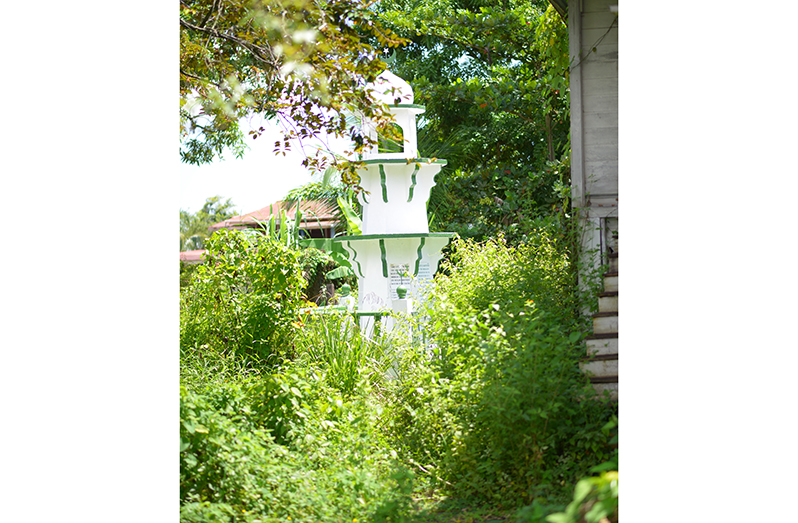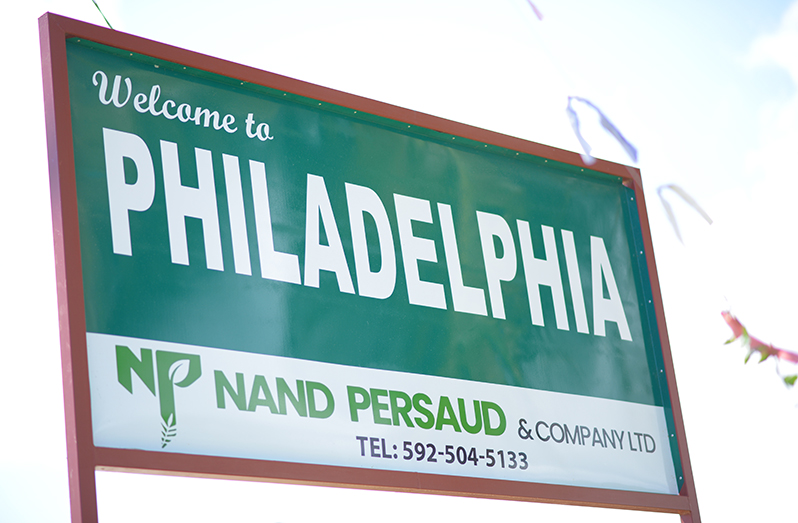A place with a religious past and a promising future
By Shaniya Harding
IN last week’s edition of Focus on the village, Mohamead Ali had much to say about Ruby, the village where he works. But he has plenty more to say about his home village of Philadelphia. Located in Region Three, the small village has a captivating religious history that is known by very few.
At age 56, Mohamead Ali, known by his friend and family simply as Ali, has lived in Philadelphia his whole life. And although he loves history everywhere, there is just something special about the history of his home.
Walking through the yard, now overgrown with grass and wildlife, Ali showed us the monument central to many residents and Muslims of the community. Located behind the very house Ali once called home is what is said to be the very first mosque built in Guyana. In the year 1860, the original mosque was said to have been erected. And many years later, Ali’s grandfather came to live on the land.

Although there is much controversy surrounding the when and who of those involved in the construction of the mosque and the subsequent monument, some things are certain. The monument marks the location of a mosque that existed a long time ago and was built by the original people of Philadelphia, ex-slaves.
The villagers have preserved the small green and white monument along with its plaque and story behind it. “Sadly, this place is abounded, but the monument is being preserved. It was erected after all the main Islamic organisations in Guyana came together and made it.” Ali then said, “Although these people were involved in this monument, the original mosque was made prior by our African brothers and sisters,” he said.
The monument’s plaque states, “This structure marks the first masjid built on the south American continent by our Muslim indentured ancestors in the year 1806.” And although it wasn’t specified by the plaque on the monument, both Ali and several villagers are sure that it was, in fact, built by Africans.
Ali’s love for history developed at a young age when he surrounded himself by the community’s elders. He is now on a mission to keep an honest record of stories they can no longer tell. For many a year Ali’s family believed the pond behind their home was just a pond. But after some research, it was discovered to be a place used by all Muslims to wash before prayer. “That was the pond with water dug by the African slaves because, as a Muslim, you are required to wash before prayer, and they didn’t have pipes in those days,” Ali said.

In describing what the mosque looked like, Ali created a picture of a home found in many stories in Guyanese history, “It was built out of branches first then it was built out of mud. The mud was placed over the plaited branches, similar to many houses in the past. The dimension of it used to be approximately 30 feet by 40 feet. And on important days like on Eid and on Fridays, people would walk from as far as Uitvlugt to come to the masjid,” said Ali.
The mosque was eventually moved twice in the years following. “It was moved to Vergenoegen, the next village. They moved it to where the old rice mill was. On that spot, there is the foundation of the wooden building. They eventually moved it to the public road. And it looks very nice now,” he said.
In the past, as described by Ali, Philadelphia was your authentic bonified countryside type of village. Although still prominent today, rice farming and farming, in general, were major aspects of everyone’s everyday life. Ali himself was a farmer, as he stated, “We had cattle in the savannah and we’d ride horses. As a little boy, I would go herd cattle and climb trees.”
Looking outside of farming, many aspects of life have changed from then to now. For example, one noticeable shift is the birth rate of children. Long ago, Ali says it wasn’t uncommon to find a family with upwards of 10 children; Ali’s father himself had eleven siblings. And with families of this size, the children normally followed in the footstep of their parents, thus carrying on the family name in the same business for decades to come.

The fact that the mosque was built by Africans has been and still is being contested. For an explanation on why the Africans could have come to settle in a place like Philadelphia, Ali attributed it to colonialism and people. Firstly, he cited the fact that people of similar cultures were separated and their faith was often lost in the separation. He then highlighted that many Africans were and still are from the nation of Islam, and the mosque, the monument and the history are just a result of them trying to preserve what had been left of their faith.
“When they, the different people of Guyana came, they were separated. If they were from the same place or spoke the same language, they would be separated. And after some time, if you put someone to live with Hindus or Indians, after a long time their culture, their language will rub off on that person. And they would begin to practise what the people practised,” he said.
Today Ali says that all he would like to see is the greater appreciation of history and for people to return to what was, saying, “I wish the sacrifices that our ancestors made in holding on to their history and holding on to their true identity that they were being forcibly deprived of by the colonial masters, was known. I wish that they would return to their roots, return to their true identity.”



.jpg)









